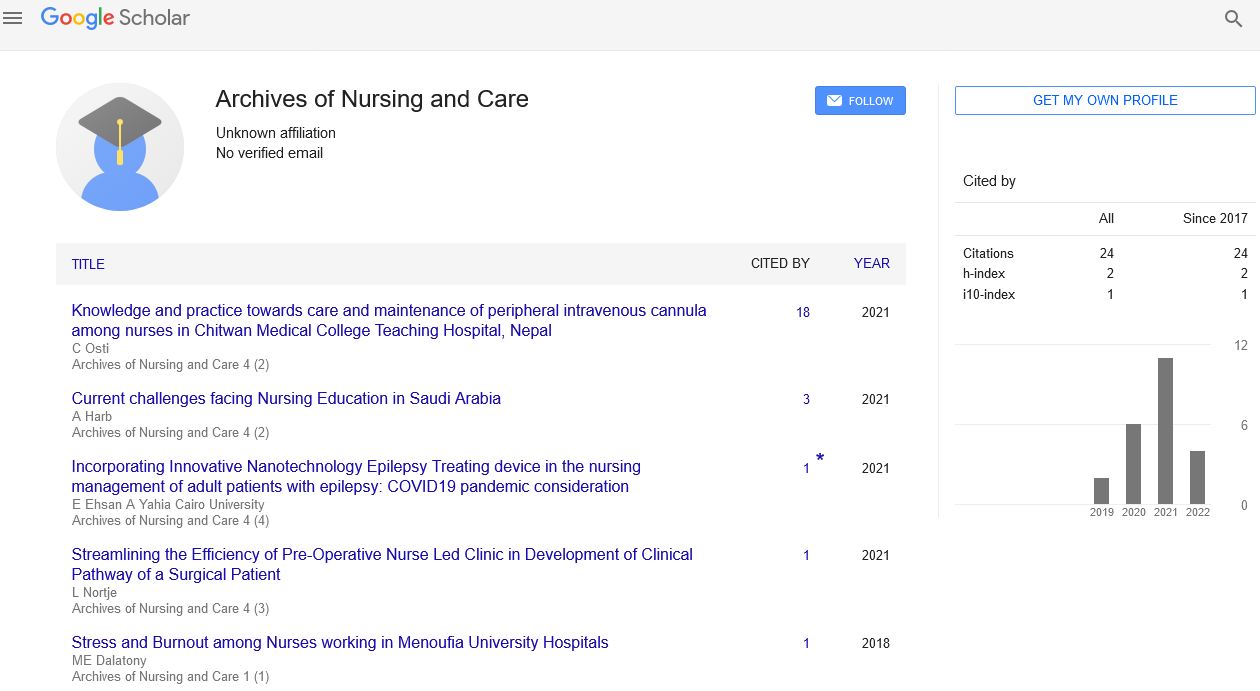Perspective - Archives of Nursing and Care (2022) Volume 5, Issue 6
A Short Note on the Evolutionary Activity in Stroke Patients at the Early Stage of Rehabilitation
Daiva Petruseviciene*
Department of Rehabilitation, Kaunas University of Medicine, Eivenių 2, 50009 Kaunas, Lithuania
Department of Rehabilitation, Kaunas University of Medicine, Eivenių 2, 50009 Kaunas, Lithuania
E-mail: daiva.petruseviciene@gmail.com
Received: 02-May-2022, Manuscript No. oanc-22-55015; Editor assigned: 03-May-2022, PreQC No. oanc-22- 55015(PQ); Reviewed: 16-May-2022, QC No.oanc-22-55015; Revised: 23- May-2022, Manuscript No. oanc-22- 55015(R); Published: 30-May-2022, DOI: 10.37532/oanc.2022.5(6).58-59
Abstract
The most common outcome of stroke is unilateral paralysis (hemiplegia) followed by disorders of coordination, balance, and movements. Due to dysfunctions of movements, self-care, cognition, behaviour, and communication, some part of stroke patients remains disabled. They need assistance and care provided by other people. Occupational therapy, which is part of rehabilitation of patients after stroke, is directed to independence training. There are scarce data related to effectiveness of occupational therapy depending on motor, cognitive, and psychosocial dysfunctions. Goals of study were to estimate effectiveness of occupational therapy at the early stage of rehabilitation depending on type of stroke, localization of brain injury, grade of lesion, age, and gender, to identify factors influencing effectiveness of occupational therapy, and to estimate their positive predictive value. In Lithuania, the stroke is not only medical, but social issue as well, since only 20% of patients suffering from stroke remain active at work. Yearly stroke incidence in Lithuania is 7000–8000 cases. The most common outcome of stroke is unilateral paralysis (hemiplegia) followed by disorders of coordination, balance, and movements. Due to dysfunctions of movements, self-care, cognition, behavior, and communication, some part of stroke patients remains disabled. They need assistance and care provided by other people. Effectiveness of occupational therapy in patients after stroke at then early stage of rehabilitation was influenced by gender, age, degree of lesion, type of stroke. Better effectiveness of occupational therapy was observed in men (P<0.05).
Keywords
hemiplegia • rehabilitation • cognitive
Introduction
The stroke is not only medical, but social issue as well, since only 20% of patients suffering from stroke remain active at work. Yearly stroke incidence in Lithuania is 7000–8000 cases [1]. The most common outcome of stroke is unilateral paralysis (hemiplegia) followed by disorders of coordination, balance, movements and cognitive disorders. Due to dysfunctions of movements, self-care, cognition, behaviour, and communication, some part of stroke patients remains disabled. They need assistance and care provided by other people. The emphasis on the importance of early rehabilitation in stroke patients is put by many scientists in their scientific researches, as it plays a great role in further disease progress as well as it improves the quality of life in future [2]. Balance dysfunction is one of the key factors putting restriction on possibilities in daily activity of patients after stroke. International classification of functioning, disability, and health enables to evaluate dysfunctions of activity and participation in social life of patients with diseases of the circulatory system. There is scientific evidence that patients after stroke most frequently have problems in learning, knowledge application, task performance, information perception and conveyance, speech, balance, ability to use things, mobility, daily activity, and interpersonal relations.
Description
During rehabilitation, occupational therapy sessions should be applied, since they determine improvement of patient’s independence and enable training of work skills [3]. The evaluation of certain occupational therapy methods is an integral part of complex rehabilitation development. There exist several occupational therapy methods and models enabling to adjust motor and cognitive dysfunctions; however, in occupational therapy practice there is still a lack of evidence-based evaluation of factors influencing effectiveness of occupational therapy, and evaluation of cognitive and motoric functions and disorders of activities by stroke patients [4]. To estimate effectiveness of occupational therapy at the early stage of rehabilitation, depending on type of stroke, localization of brain injury, grade of lesion, age, and gender , To identify factors influencing effectiveness of occupational therapy and to estimate their positive predictive value. The process of occupational therapy was separated in the following parts: selecting of practice model, data collection, data analysis, adjusting of individualized complex of occupational therapy measures, implementation of the complex, and evaluation of effectiveness of occupational therapy Relationship between potential risk factor and outcome was established using logistic regression analysis and calculating odds ratio (OR, including 95% confidence interval (CI)).
Statistical significance was set at P<0.05. Effectiveness of occupational therapy was evaluated for those groups separately, observing changes from baseline to the end of early stage of rehabilitation [5]. If patient moves from group 1 or group 2 to group 3, he/she shows high effectiveness of occupational therapy.
Acknowledgement
None
Conflict of interest
No conflict of interest
References
- Cirstea MC, Levin MF. Compensatory strategies for reaching in stroke. Brain .123:940-93(2000).
- King RB. Quality of life after stroke. J Stroke .27;1467- 539(1996).
- Paolucci S, Antonucci G, Grasso MG et al. Early versus delayed in patient stroke rehabilitation: a matched comparison conducted in Italy. Arch Phys Med Rehabil .81:695-700(2000).
- McGuire JR, Harvey RL. The prevention and management of complications after stroke. Phys Med Rehabil.10: 857-931(1999).
- Kraneiukaite D, Rastenyte D, Jureniene K et al. Persirgusiųjų galvos smegenų insultu gyvenimo kokybe. (Quality of life in stroke survivors.) Medicina (Kaunas) 43(9):736-45(2007).

